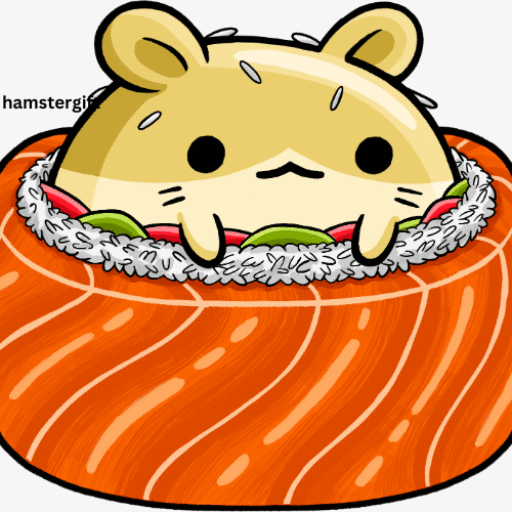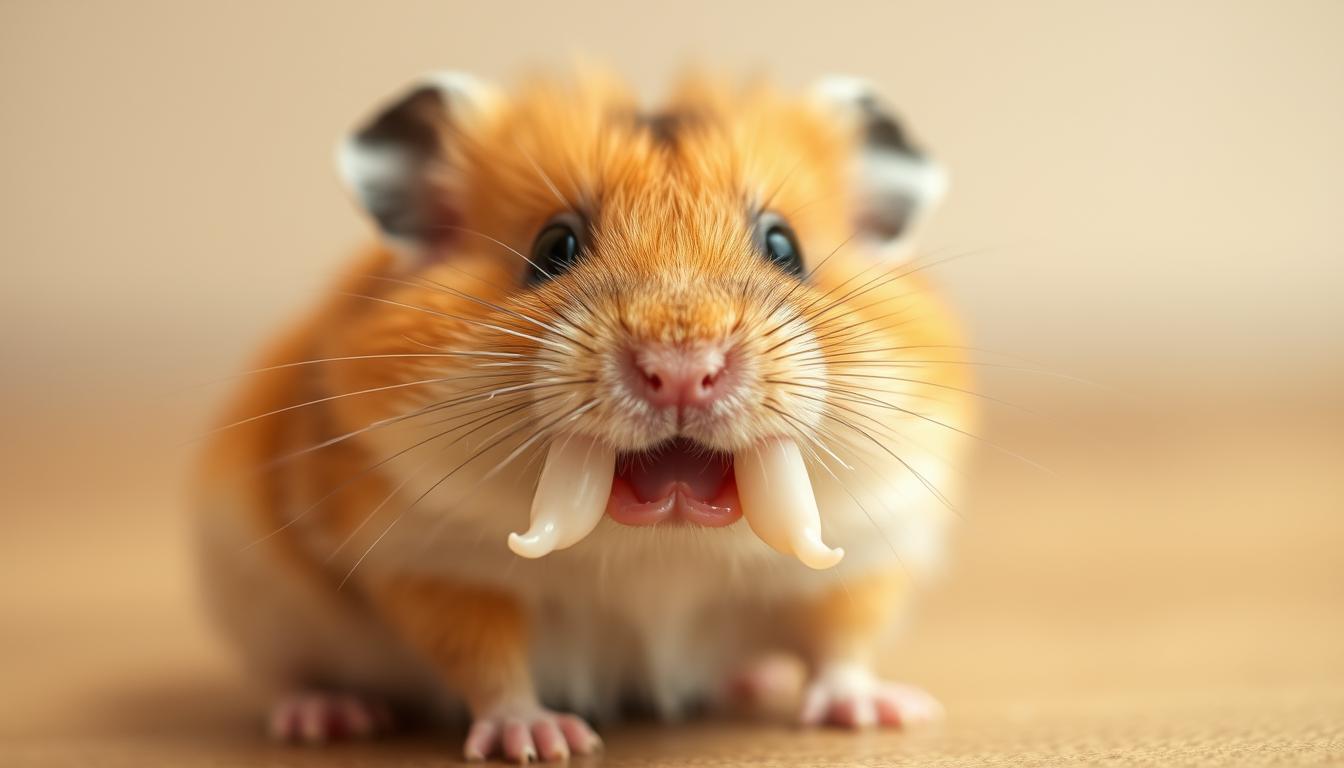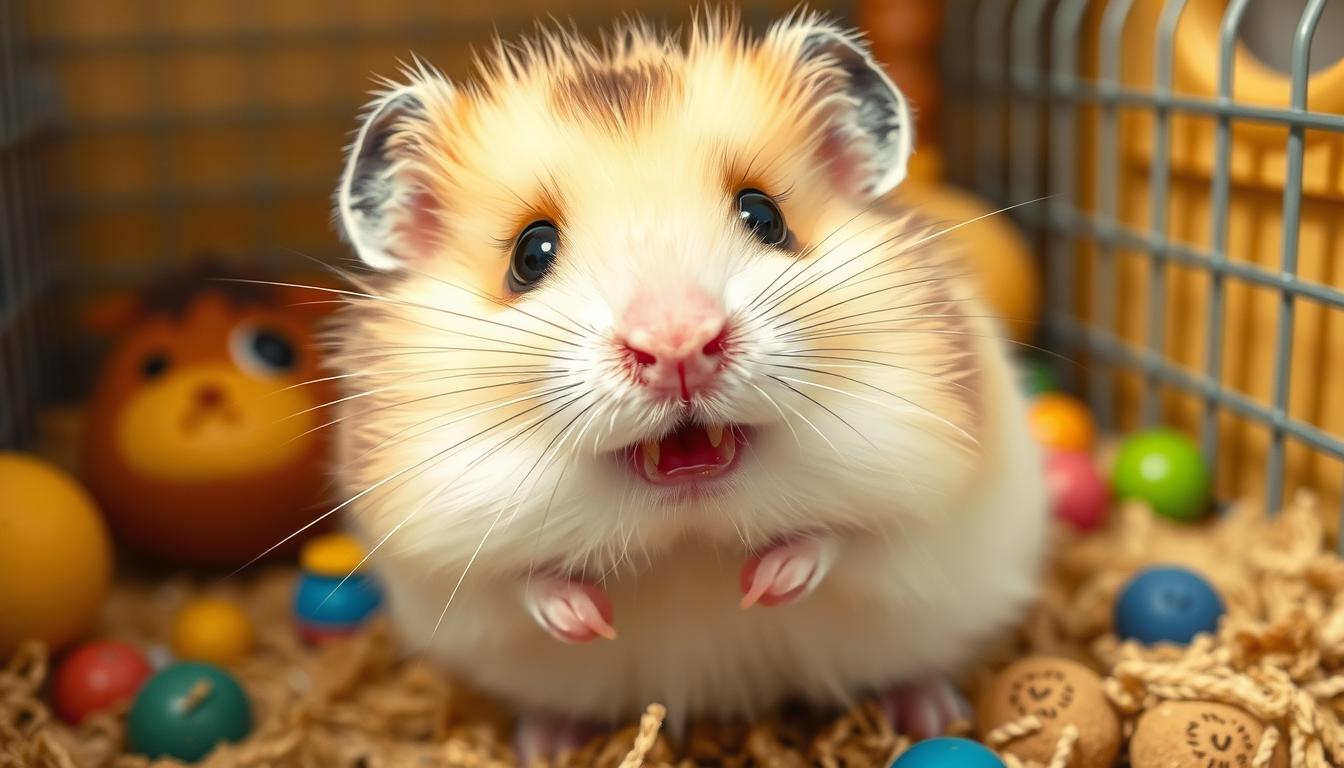Hamsters, those adorable pocket-sized bundles of fluff and mischief, are notorious for their cheek-stuffing habits and endless energy. But have you ever stopped to think about what’s going on inside that tiny mouth? Specifically, their teeth! Unlike us, hamsters have teeth that continuously grow throughout their lives. This might leave you wondering, "Do I need to become my hamster’s personal dentist and give them regular teeth trims?" The answer, thankfully, is usually no, but understanding hamster dental care is crucial for their overall well-being. This article will guide you through the ins and outs of hamster teeth, helping you recognize potential problems and ensure your furry friend maintains a happy and healthy smile. So, let’s dive in and uncover the secrets behind those ever-growing chompers!
Hamster Teeth: Are They Like Tiny Dagger Claws, Really?
Hamster teeth aren’t quite the sharp, menacing daggers that image might conjure. While they are indeed strong and capable of some serious gnawing, they’re more like tiny, chisel-shaped tools perfectly designed for their herbivorous diet. Think of them as miniature gardening shears, constantly working to trim down tough plant matter and seeds.
Unlike our teeth, which have roots and stop growing, hamster teeth are "open-rooted," meaning they grow continuously throughout their lives. This is a fascinating adaptation that allows them to constantly replenish the wear and tear caused by their constant chewing and gnawing.
The incisors, the front teeth, are the ones that get the most attention and are most likely to overgrow. These are the teeth responsible for grabbing and cutting food. They’re quite prominent and easy to spot, even in a squirming hamster.
Hamsters also have molars further back in their mouths, used for grinding food. These molars don’t typically cause problems with overgrowth like the incisors do, but they can still be affected by dental disease.
The color of a healthy hamster’s incisors is usually a yellowish-orange. Don’t be alarmed by this! This coloration is due to the iron content in the enamel, which makes the teeth stronger and more resistant to wear.
So, while they might not be dagger claws, hamster teeth are powerful tools essential for their survival. Understanding their structure and function is the first step in providing proper dental care for your tiny companion.
Growing and Grinding: The Hamster Teeth Story Begins
The story of hamster teeth begins with continuous growth. As mentioned before, their incisors are open-rooted, meaning they never stop growing. This constant growth is a necessary adaptation to compensate for the constant wear and tear they endure.
Imagine a tiny factory constantly producing new tooth material. That’s essentially what’s happening in a hamster’s mouth. This growth is carefully balanced by the grinding action of chewing, which naturally wears down the teeth.
The process of grinding is crucial for maintaining the proper length and shape of the incisors. When a hamster chews, the upper and lower incisors rub against each other, effectively filing them down.
This natural filing process is why providing appropriate chewing materials is so important. Without these materials, the teeth can’t wear down properly, leading to potential overgrowth.
The rate of growth can vary slightly between individual hamsters, but the principle remains the same: constant growth balanced by constant wear. Factors like diet and genetics can also influence the rate of growth and wear.
Therefore, understanding the dynamic interplay between growth and grinding is key to ensuring your hamster’s teeth stay healthy and properly aligned. It’s a delicate balance that requires a little bit of attention from you, the responsible owner.
Uh Oh, Too Long! Can Hamster Teeth Overgrow? Help!
Unfortunately, yes, hamster teeth can indeed overgrow. This is a common problem, especially in older hamsters or those with certain health conditions. Overgrowth occurs when the teeth grow faster than they are worn down.
Imagine the tiny factory of tooth production working overtime, but the grinding process isn’t keeping up. The result is excessively long incisors that can cause a variety of problems for your furry friend.
Overgrown teeth can interfere with a hamster’s ability to eat properly. They may struggle to pick up food, chew it effectively, or even close their mouth completely. This can lead to weight loss and malnutrition.
The overgrown teeth can also cause injuries to the hamster’s cheeks, gums, or tongue. The sharp edges of the teeth can rub against the soft tissues, causing pain, inflammation, and even infections.
In severe cases, overgrown teeth can grow so long that they curl back into the hamster’s mouth, causing significant discomfort and making it impossible for them to eat. This is a serious situation that requires immediate veterinary attention.
So, if you suspect your hamster’s teeth are overgrown, don’t panic, but do take action. Early detection and intervention are crucial to preventing serious complications and ensuring your hamster’s comfort and well-being.
Chewing Champs: What Keeps Those Teeth Naturally Trimmed?
The key to naturally trimming hamster teeth lies in providing them with the right chewing materials. These materials encourage the grinding action that wears down the teeth and keeps them at a healthy length.
Think of it as providing your hamster with their own personal dental tools. These tools allow them to maintain their teeth naturally, without the need for you to intervene with clippers or files.
Hard, fibrous foods are excellent for promoting natural teeth trimming. These foods require a lot of chewing, which helps to wear down the incisors.
Wooden chew toys are another great option. Look for untreated, kiln-dried wood that is safe for hamsters to gnaw on. Avoid painted or varnished wood, as these can be toxic.
Cardboard tubes and boxes can also provide hours of chewing entertainment and help to keep those teeth trimmed. Just make sure to remove any staples or tape before giving them to your hamster.
Even some types of hay, like Timothy hay, can contribute to dental health. While it’s not as effective as harder materials, it still provides some chewing action and adds fiber to their diet.
Signs Your Hamster’s Teeth Need a Little Extra TLC
Being observant is key to identifying potential dental problems early on. Watch for subtle changes in your hamster’s behavior and appearance that might indicate their teeth need some attention.
One of the most obvious signs is difficulty eating. If your hamster is dropping food, struggling to chew, or avoiding hard foods altogether, it could be a sign of overgrown teeth or other dental issues.
Weight loss is another red flag. If your hamster is eating less or not absorbing nutrients properly due to dental problems, they may start to lose weight.
Drooling or excessive salivation can also indicate dental pain or discomfort. If you notice your hamster’s fur is constantly wet around their mouth, it’s worth investigating.
Changes in grooming habits can also be a sign. A hamster with dental pain may be less likely to groom themselves properly, leading to a scruffy or unkempt appearance.
Finally, look directly at your hamster’s teeth. If they appear excessively long, misaligned, or broken, it’s time to take action. A healthy hamster’s incisors should be relatively even and not overly long.
Toys and Treats: The Best Dental Care for Tiny Chompers
Providing the right toys and treats is a fun and effective way to promote good dental health in your hamster. Think of it as a delicious and entertaining way to keep their teeth in tip-top shape.
Hard, crunchy treats like hamster-specific biscuits or dried vegetables can encourage chewing and help to wear down the teeth. Just be sure to offer these in moderation to avoid weight gain.
Wooden chew toys are a must-have for any hamster cage. Look for safe, untreated wood that is specifically designed for hamsters. Applewood, willow, and birch are good choices.
Cardboard tubes and boxes are not only fun for playing and hiding, but they also provide a safe and satisfying chewing experience. Remember to remove any staples or tape first.
Mineral blocks can also be helpful, as they provide essential minerals and encourage chewing. However, some hamsters may not be interested in them, so it’s not a guaranteed solution.
Avoid sugary treats and sticky foods, as these can contribute to dental problems and other health issues. Stick to natural, healthy options that promote chewing and wear down the teeth.
When to Worry: Recognizing Serious Dental Problems
While providing chewing materials can prevent many dental problems, sometimes more serious issues can arise. Recognizing these problems early is crucial for ensuring your hamster receives prompt veterinary care.
Abscesses are a serious concern. These are pockets of infection that can develop around the teeth or gums. Signs of an abscess include swelling, redness, and pus discharge.
Misalignment of the teeth, also known as malocclusion, can also cause problems. This can occur due to genetics or injury and can make it difficult for the hamster to chew properly.
Broken teeth can also be a source of pain and infection. If you notice a broken tooth, it’s important to seek veterinary attention to prevent further complications.
Tumors in the mouth are rare, but they can occur. These can cause swelling, bleeding, and difficulty eating. If you suspect your hamster has a tumor, it’s essential to consult with a veterinarian.
Finally, any sudden or significant changes in your hamster’s eating habits, behavior, or appearance should be cause for concern. If you’re unsure whether something is wrong, it’s always best to err on the side of caution and consult with a veterinarian experienced in treating small animals.
The Vet’s the Best: Professional Hamster Teeth Trimming
When overgrown teeth become a significant problem, professional trimming by a veterinarian is often the best solution. While


